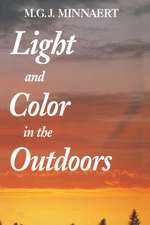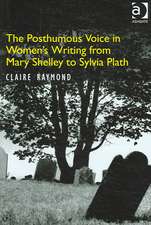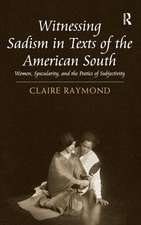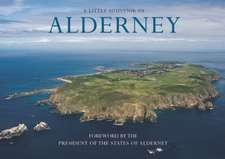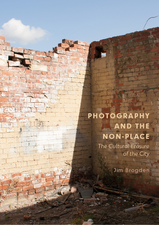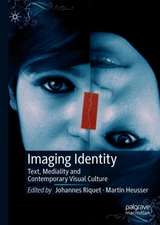The Photographic Uncanny: Photography, Homelessness, and Homesickness
Autor Claire Raymonden Limba Engleză Paperback – 13 dec 2020
| Toate formatele și edițiile | Preț | Express |
|---|---|---|
| Paperback (1) | 491.38 lei 22-36 zile | +20.90 lei 6-12 zile |
| Springer International Publishing – 13 dec 2020 | 491.38 lei 22-36 zile | +20.90 lei 6-12 zile |
| Hardback (1) | 493.85 lei 22-36 zile | +29.91 lei 6-12 zile |
| Springer International Publishing – 6 dec 2019 | 493.85 lei 22-36 zile | +29.91 lei 6-12 zile |
Preț: 491.38 lei
Preț vechi: 592.02 lei
-17% Nou
Puncte Express: 737
Preț estimativ în valută:
94.02€ • 98.43$ • 77.80£
94.02€ • 98.43$ • 77.80£
Carte disponibilă
Livrare economică 17-31 martie
Livrare express 01-07 martie pentru 30.89 lei
Preluare comenzi: 021 569.72.76
Specificații
ISBN-13: 9783030284992
ISBN-10: 3030284999
Pagini: 326
Ilustrații: XI, 326 p. 39 illus., 14 illus. in color.
Dimensiuni: 148 x 210 x 21 mm
Greutate: 0.45 kg
Ediția:1st ed. 2019
Editura: Springer International Publishing
Colecția Palgrave Macmillan
Locul publicării:Cham, Switzerland
ISBN-10: 3030284999
Pagini: 326
Ilustrații: XI, 326 p. 39 illus., 14 illus. in color.
Dimensiuni: 148 x 210 x 21 mm
Greutate: 0.45 kg
Ediția:1st ed. 2019
Editura: Springer International Publishing
Colecția Palgrave Macmillan
Locul publicării:Cham, Switzerland
Cuprins
1.A Political Uncanny: The Homelessness of Photographs.- 2.Eugene Atget’s Sacred Spaces: Uncanny Capitalism.- 3.August Sander’s Habitus.- 4.Walker Evans’s Emotions.- 5.Diane Arbus’s Uncanny Aura.- 6.Second Selves: Woodman, Meatyard, Allison.- 7.North American Uncanny: Shelley Niro.- 8.Ghosts of West Baltimore: Devin Allen.- 9.Conclusion: Revisiting the 18th-Century Visual Uncanny.
Notă biografică
Claire Raymond is the author of six books on aesthetic theory, feminist theory, and photography. Her previous works include Witnessing Sadism in Texts of the American South (2014), Francesca Woodman’s Dark Gaze (2016), and Women Photographers and Feminist Aesthetics (2017). She teaches for the Program in Art History at the University of Virginia, USA.
Textul de pe ultima copertă
This book argues for a renewed understanding of the fundamentally uncanny quality of the medium of photography. It especially makes the case for the capacity of certain photographs—precisely through their uncanniness—to contest structures of political and social dominance. The uncanny as a quality that unsettles the perception of home emerges as a symptom of modern and contemporary society and also as an aesthetic apparatus by which some key photographs critique the hegemony of capitalist and industrialist domains. The book’s historical scope is large, beginning with William Henry Fox Talbot and closing with contemporary indigenous photographer Bear Allison and contemporary African American photographer Devin Allen. Through close readings, exegesis, of individual photographs and careful deployment of contemporary political and aesthetic theory, The Photographic Uncanny argues for a re-envisioning of the political capacity of photography to expose the haunted, homeless,condition of modernity.
Caracteristici
Offers an original theory of the photographic medium as uniquely capable of mounting political intervention in the contemporary world Makes an urgent case for our understanding historical structures that create present-day situations through a tracing of the medium of photography Offers an approach to re-reading the history of photography, illuminating blind spots left undeveloped in earlier books on photography and its history Sets itself apart from many other academic/scholarly texts through the lyricism and precision of its language

